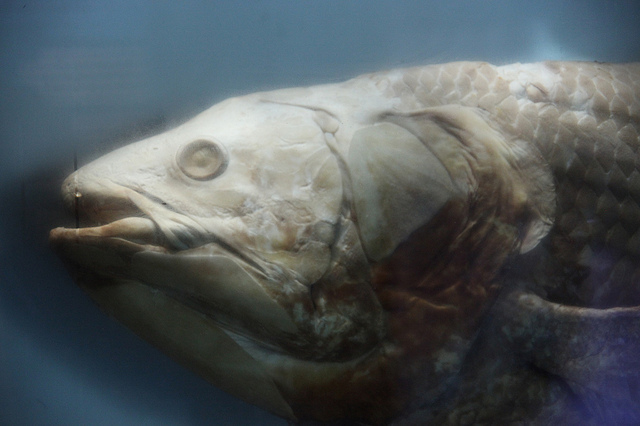Scientists get the coelacanth genome and a hint of the origin of limbs
Ars Technica » Scientific Method 2013-04-22

The coelacanth was discovered in 1938, but scientists already knew what the organism looked like. It's the lone representative of a lineage that we knew from fossils, the last of which were preserved while the dinosaurs still roamed the earth. Thus, the coelacanth earned the nickname of "living fossil," but that's a bit misleading. Although it looks similar, we have no real idea of how much or how little the organism has changed during those millions of years. After all, on the DNA level, the tuatara (the last representative of a lineage that originated in the Triassic) is the fastest evolving creature we know of.
Still, the coelacanth is interesting to scientists. It, along with the lungfish, is representative of a group called lobe-finned fishes, which have four limb-like fins. A series of fossils have revealed that these fins gradually transformed into the four limbs of modern tetrapods such as reptiles, birds, amphibians, and mammals. So, the coelacanth could tell us something about the base state that our limbs started out in. To find out, researchers have now sequenced its genome, and they found that genes essential to constructing our limbs were already active in the fins of the coelacanth.
The genome itself is just another example of all we can do with the massive DNA sequencing capacity that we've built up. Things only get interesting when you compare the coelacanth's genome to the genomes of other species. These tests do show that the coelacanth lives up to its dinosaur-era reputation, as its proteins are changing at the lowest rate of any vertebrate we've looked at. The new genome also makes it clear that the lungfish is more closely related to tetrapods than the coelacanth.
Read 8 remaining paragraphs | Comments